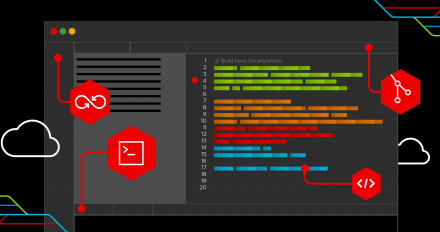
Manage operators as ClusterExtensions with OLM v1
Simplify operator management on Red Hat OpenShift with Operator Lifecycle Manager. Learn key scenarios using the ClusterExtension API with copy-paste examples.

Simplify operator management on Red Hat OpenShift with Operator Lifecycle Manager. Learn key scenarios using the ClusterExtension API with copy-paste examples.

This article describes the setup and operation of JBoss EAP 7 clustering in OpenShift Container Platform using the DNS_PING protocol. (Part 1 of 2)

Learn how to optimize GPU resource use with NVIDIA Multi-Instance GPU (MIG) and discover how MIG-Adapter enhances GPU resource utilization in Kubernetes.

Explore the latest features in Network Observability 1.8, an operator for Red Hat OpenShift and Kubernetes that provides insights into network traffic flows.

Discover a lesser-known method for using the custom metrics autoscaler based on a real-world scenario.

The technology preview of incident detection is now available in the Red Hat OpenShift web console monitoring UI plug-in.

Introducing the new Multi-Cluster Alerting UI, a developer preview available for Red Hat Advanced Cluster Management for Kubernetes.

In this article we examine the new Cryostat 4.0 OpenShift Web Console Dynamic

This article describes benchmarking the Vertical Pod Autoscaler (VPA) in OpenShift, including recommendations for tuning VPA components.

Discover what's new for developers in Red Hat OpenShift 4.18, including new

Learn how to deploy confidential containers on bare metal with the Intel TDX and AMD SEV-SNP Trusted Execution Environments (TEEs).

Learn how to convert PGT to RHACM Policy Generator using the cnf-features-deploy project with the newly improved Red Hat OpenShift 4.16.

Discover the advantages of OpenShift Virtualization as an alternative to VMware.

Learn how to run distributed AI training on Red Hat OpenShift using RoCE with

This article presents a means of automatically deploying an open source Cloud-Native Network Function, called Example-CNF, in order to test particular Telco-related configurations and scenarios.

A guide for the new operator COO's practice.

Red Hat officially supports the Cluster Observability Operator on OpenShift 4.17 clusters, and this article provides a quick overview to help you determine if the COO is right for your needs.


Explore the latest features in Network Observability 1.7, an operator for Red Hat OpenShift and Kubernetes that offers insights into your network traffic flows.

This article explores use cases for the dynamic quorum configuration in Kafka that allows KRaft clusters to scale controller nodes without downtime.

Find out what new features and capabilities have been provided in Red Hat

Explore several methods for building and deploying JBoss EAP 8 in Red Hat OpenShift Container Platform 4 using the Galleon provisioning tool.

This article provides a guide to integrating Red Hat Advanced Cluster Security with the multicluster global hub for centralized security data collection across managed clusters. It covers the setup requirements, configuration steps, and key annotations needed to enable seamless data aggregation and observability through a unified dashboard.

Explore a basic use case that demonstrates how to back up and restore OpenShift workloads using the OpenShift APIs for Data Protection Operator.

When it comes to testing, many of Red Hat's development teams require administrative access to an OpenShift cluster to verify their OLM Operators. In the Konflux project we set out to provide ephemeral clusters as a service to support our users.